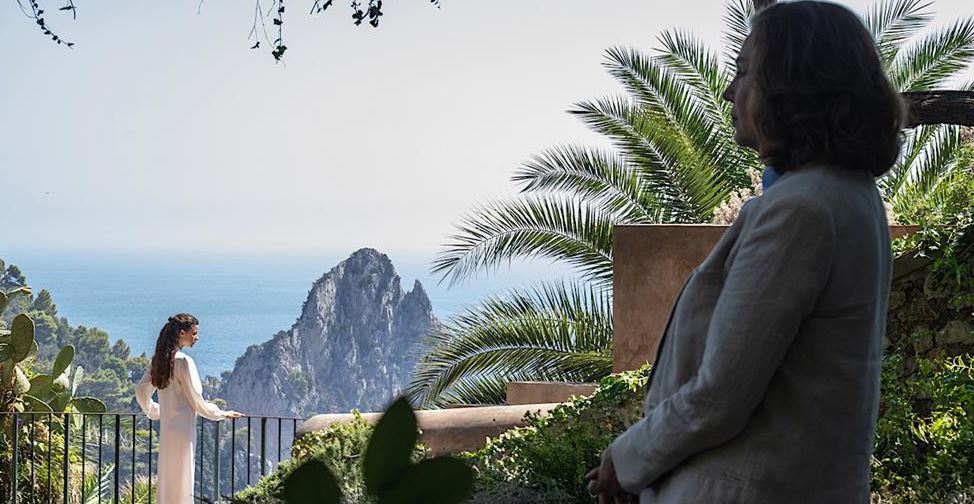Parthenope Full Movie Watch
Parthenope Full Movie Watch
Parthenope,” the much-anticipated film that has captured the imagination of audiences worldwide, offers a vibrant tapestry of human emotions, love, and the intricate dance of life. Directed by the visionary filmmaker, who is known for eliciting heartfelt performances and visually stunning scenes, this film promises to be an experience that resonates beyond the screen. Below, we delve into the film’s details and provide a watching guide to make the most of your viewing experience.

Parthenope
“Parthenope” is the latest film from acclaimed Italian director Paolo Sorrentino, known for his visually stunning and thematically rich storytelling. This film marks a significant departure for Sorrentino as it features a female protagonist, exploring the complexities of beauty, youth, and the human experience through the life of its titular character, Parthenope. The film follows her journey from adolescence into her 70s, showcasing how her extraordinary beauty impacts her relationships and interactions with those around her.
Plot Summary
The narrative centers on Parthenope, played initially by newcomer Celeste Dalla Porta and later by legendary actress Stefania Sandrelli. Named after a mythical siren associated with Naples, Parthenope’s life unfolds against the backdrop of this vibrant city. The story begins with her birth, heralded by an ornate golden carriage sent by her wealthy godfather. As she grows up in Naples, we witness her relationships with family members, particularly her brother Raimondo, and friends like Sandrino.
Sorrentino intricately weaves themes of beauty and desire throughout the film. Men are captivated by Parthenope’s allure; however, this fascination often leads to complex dynamics where admiration can turn into obsession or alienation. The film delves into Parthenope’s academic pursuits as an anthropology student, highlighting her intelligence alongside her physical beauty.
Visual Style and Direction
Sorrentino is renowned for his unique visual style that blends elegance with emotional depth. In “Parthenope,” he employs slow-motion sequences to elevate mundane moments into grand spectacles. For instance, scenes featuring young women walking through Naples become poetic representations of freedom and youthfulness. The director’s signature use of striking imagery serves to enhance the thematic exploration of beauty—both its allure and its burdens.
Themes Explored
At its core, “Parthenope” examines the relationship between beauty and identity. Sorrentino poses questions about how society perceives beautiful individuals and how these perceptions shape their experiences. The film also touches on existential themes such as longing, loneliness, and the search for genuine connection amidst superficial admiration.
Watching Guide
For those interested in experiencing “Parthenope,” here are some tips:
- Where to Watch: Check local listings for theaters showing “Parthenope.” It may also be available on streaming platforms following its theatrical release.
- Viewing Experience: Given Sorrentino’s emphasis on visual storytelling, watching the film in a theater setting can enhance your appreciation of its cinematography.
- Discussion Points: After viewing, consider discussing themes such as the nature of beauty in society or how gender roles are portrayed through Parthenope’s character.
- Related Works: To fully appreciate “Parthenope,” you might explore Sorrentino’s previous films like “The Great Beauty” or “Youth,” which similarly delve into themes of aesthetics and human experience.
- Audience Reception: Be prepared for varied reactions; while some may find deep meaning in Sorrentino’s exploration of beauty and existence, others might critique it as overly focused on aesthetics without substantial narrative progression.
“Parthenope” promises to be a thought-provoking cinematic experience that challenges viewers to reflect on their perceptions of beauty while enjoying Sorrentino’s masterful direction.
Recent Posts
Search
Recent Posts
- Thunderbolts full movie english sub 720p hd May 4, 2025
- Babygirl January 27, 2025
- The Substance How To Watch Movie Online January 16, 2025
Archives
- May 2025 (1)
- January 2025 (148)
- December 2024 (63)
- August 2024 (6)
- July 2024 (9)
